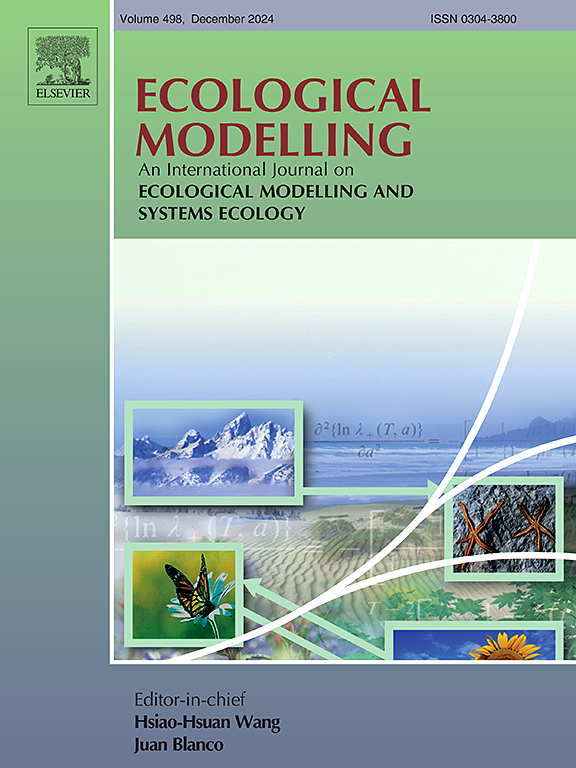Balancing act: A participatory system dynamics approach for Mar Menor’s sustainable future
IF 3.2
3区 环境科学与生态学
Q2 ECOLOGY
引用次数: 0
Abstract
The Mar Menor lagoon and coastal area are facing significant environmental degradation; however, the role of socio-economic activities in this crisis has been insufficiently explored. Understanding this connection is crucial for reversing the damage and ensuring sustainable development. Our research employs a participatory system dynamic modeling approach, offering a fresh perspective on the intricate interplay among environmental, social, and economic factors in the Mar Menor catchment. This method not only identifies the shared responsibilities of various economic sectors and governance levels but also highlights the critical misalignment of policies at local, regional, and national levels. By simulating different future scenarios, we demonstrate how economic sectors can collaboratively drive sustainable social-ecological interventions. This approach enables stakeholders to understand the underlying dynamics of environmental degradation and its socio-economic connections, allowing them to anticipate the medium- and long-term consequences of their actions. It can aid in creating integrated, sustainable sectoral strategies and practices. The proposed mixed strategy scenario provides actionable insights for policymakers, enabling them to develop well-aligned policies that effectively mitigate nitrate pollution and promote sustainable socio-economic growth. Moreover, this approach facilitates anticipating long-term unintended consequences, ensuring that interventions are effective. Our findings emphasize the urgent need for coordinated action and provide a clear roadmap toward improving the water quality of the Mar Menor while fostering sustainable socio-economic development in the area. By aligning policies and leveraging shared responsibilities, Mar Menor’s vital ecosystem can be safeguarded, securing a sustainable future for the region.

平衡行为:一个参与式的系统动力学方法为Mar Menor的可持续未来
Mar Menor泻湖和沿海地区正面临严重的环境退化;然而,社会经济活动在这场危机中的作用尚未得到充分探讨。了解这种联系对于扭转损害和确保可持续发展至关重要。我们的研究采用参与式系统动态建模方法,为Mar Menor流域环境、社会和经济因素之间错综复杂的相互作用提供了一个新的视角。这种方法不仅确定了不同经济部门和治理水平的共同责任,而且还突出了地方、区域和国家层面政策的严重错位。通过模拟不同的未来情景,我们展示了经济部门如何协同推动可持续的社会生态干预。这种方法使利益相关者能够了解环境退化的潜在动力及其社会经济联系,使他们能够预测其行动的中期和长期后果。它可以帮助制定综合的、可持续的部门战略和做法。拟议的混合战略情景为政策制定者提供了可行的见解,使他们能够制定出有效减轻硝酸盐污染和促进可持续社会经济增长的协调一致的政策。此外,这种方法有助于预测长期意想不到的后果,确保干预措施的有效性。我们的研究结果强调,迫切需要采取协调一致的行动,并提供一个明确的路线图,在促进该地区可持续的社会经济发展的同时,改善Mar Menor的水质。通过协调政策和利用共同责任,可以保护马尔梅诺至关重要的生态系统,确保该地区的可持续未来。
本文章由计算机程序翻译,如有差异,请以英文原文为准。
求助全文
约1分钟内获得全文
求助全文
来源期刊

Ecological Modelling
环境科学-生态学
CiteScore
5.60
自引率
6.50%
发文量
259
审稿时长
69 days
期刊介绍:
The journal is concerned with the use of mathematical models and systems analysis for the description of ecological processes and for the sustainable management of resources. Human activity and well-being are dependent on and integrated with the functioning of ecosystems and the services they provide. We aim to understand these basic ecosystem functions using mathematical and conceptual modelling, systems analysis, thermodynamics, computer simulations, and ecological theory. This leads to a preference for process-based models embedded in theory with explicit causative agents as opposed to strictly statistical or correlative descriptions. These modelling methods can be applied to a wide spectrum of issues ranging from basic ecology to human ecology to socio-ecological systems. The journal welcomes research articles, short communications, review articles, letters to the editor, book reviews, and other communications. The journal also supports the activities of the [International Society of Ecological Modelling (ISEM)](http://www.isemna.org/).
 求助内容:
求助内容: 应助结果提醒方式:
应助结果提醒方式:


